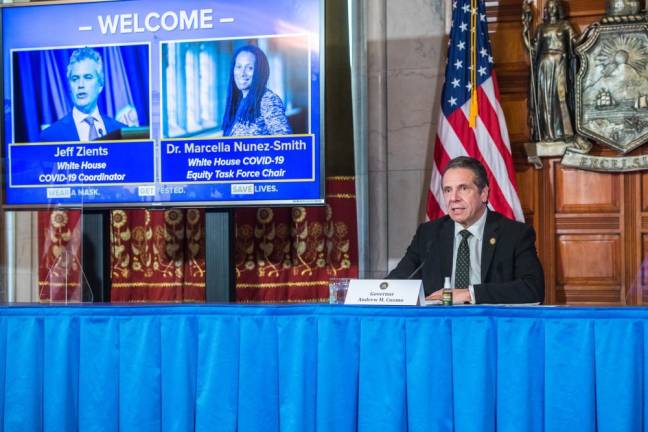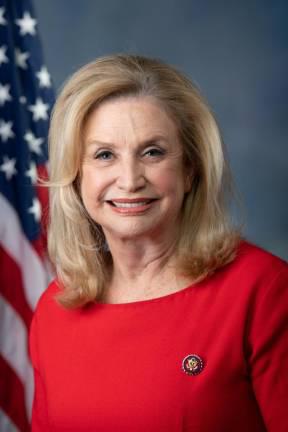How Much COVID Relief is Enough?
Cuomo falls short of $15 billion in aid for the state budget, but Pelosi and Maloney say New York is getting plenty


One of New York’s biggest fiscal and economic challenges is that no one knows how big New York’s fiscal and economic challenge is. The perfect financial storm of COVID-19, the ensuing economic disruption and the trailing indicator of plunging tax receipts has created the governmental equivalent of flying blind into a cloud full of rocks.
This was front and center in the last few days as Governor Andrew Cuomo got into a spat with his erstwhile ally, Speaker Nancy Pelosi, over whether New York was getting its fair share of federal aid - even as the House Committee on Oversight and Reform chaired by Rep. Carolyn Maloney of the Upper East Side signed off on that aid.
It is little wonder this haggling involved only Democrats. Republican positions ranged from we don’t need another stimulus/rescue plan to, yes, we should do something but this is way too big and “has largely prioritized the policy objectives of the far left over bipartisan compromise,” as Rep. Tom Reed, a Republican of Corning New York, put it to the Buffalo News.
Cuomo has been saying for weeks that as part of President Joseph R. Biden’s $1.9 trillion rescue plan, New York State needed direct help of $15 billion to fill the gap created in the state budget by the pandemic. The governor had so bet on this number that he even included it as an infographic on page one of his financial plan overview last month. The little sketches of a school and a hospital were just adorable.
But when Congress released its allocation of $350 billion in state and local aid (within the $1.9 trillion total package), Cuomo bridled at the $12.7 billion allocated directly to New York State government.
“There is no distribution formula for that $350 billion that does not get the state of New York $15 billion,” Cuomo wrote last week to New York Democrats in the House, calling that amount “fair, in my opinion.” Those members of Congress took up the governor’s cause and wrote to Pelosi demanding the $15 billion.
“We urge you to ensure that New York receives the stabilization funding it needs to bridge its two-year, $15 billion budget gap,” the New York Democrats wrote. “Without these funds, the state will face a dire financial crisis and be forced to take drastic and damaging steps to address the shortfall.”
Or as the governor summed up: “The state needs $15 billion, and that’s the actual need and that’s what we should get and if we don’t get $15 billion I will be disappointed and I don’t think it’s fair.” If the governor sounded a tad petulant, he was having a bad week in general, as a top aide acknowledged the state had lowballed the COVID-19 death count at the state’s nursing homes. The credibility of his numbers was under attack on both the pandemic and budget fronts.
“Strong Funding”
Pelosi brushed back the $15 billion in a letter Thursday: “Your delegation has secured strong funding for New York governmental services,” Pelosi wrote to the New Yorkers.
She said that the overall aid package “addressed” the state budget gap, because beyond the $12.7 billion there will be billions more in aid to New York local governments, the MTA, school districts and colleges. Also, she noted, some of the funds to increase testing and vaccine distribution, which are separate from the $350 billion local aid package, will flow directly to the state health department.
Maloney stood with the Speaker Friday as her committee cleared the state and local aid package, probably the most controversial part of President Biden’s COVID rescue package. Maloney called the local aid “momentous,” adding:
“Having been the epicenter of the pandemic in the early months,” Maloney said, “our city and state are in desperate need for this relief which will help keep our first responders, teachers, frontline workers, and other essential workers safely on the job.”
When Cuomo and a bipartisan group of governors met with President Biden on Friday, even as Maloney’s committee was doing its work, the governor did not mention his $15 billion.
Closing the Gap
What is impressive is the ability of Cuomo and the other political participants to speak with such certainty in a moment of overwhelming uncertainty. The governor’s $15 billion is a good, and frankly small, illustration of this much larger reality.
The truth is no one has any idea whether $15 billion or $12.7 or some other number is the figure needed to close the gap in the state budget, which totals more than $100 billion a year.
State and city budgets rest on their local economies, which drive both costs and revenues. Even in normal times, estimating these is as much art as science.
If you would like to get a feel for this art, prepare your own state and city budgets at home, starting with answering these questions (please show your work):
*How quickly will most New Yorkers be vaccinated against COVID-19 and will the vaccine prevent the spread of the coronavirus (as distinct from protecting against serious illness, which researchers are confident of).
*Based on your answer above, how soon will New Yorkers feel comfortable returning to work at their midtown offices, to riding the subways (and paying the fare) and to indoor dining, movies and Broadway theater?
*Based on both answers above, give us your projection of New York income, sales and property tax receipts over the next three fiscal years (FYI, the state fiscal year starts April 1, the city’s July 1).
You see the challenge? “Moving target” doesn’t begin to capture it.
For reference, last April, at the height of the pandemic’s carnage in New York, the state projected a loss of revenues of $63 billion over the next four years. The local economy is still struggling, but the situation has at least gone from worse to bad. “The economy recovered faster than our expectations,” said the state budget director, Robert F. Mujica Jr.
The projection now is that revenues will be “only” $39 billion below pre-pandemic levels, an improvement of $24 billion in six months. What will the situation be six months from now? Return to the three questions above. When you have completed your state budget please complete your budget for New York City, including aid from the state to the city (again, show your work).
“Having been the epicenter of the pandemic in the early months, our city and state are in desperate need for this relief which will help keep our first responders, teachers, frontline workers, and other essential workers safely on the job.” Rep. Carolyn Maloney, Chair of House Committee on Oversight and Reform